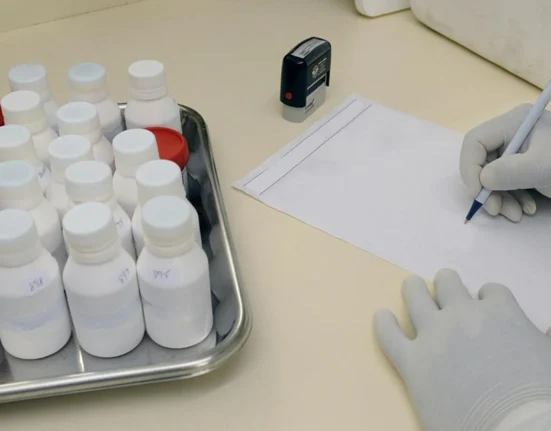For candidates preparing for the NMC OSCE (Objective Structured Clinical Examination), understanding the differences between hospital and community prescription charts in the NMC OSCE is essential. Both types of MAR charts are frequently used in various care settings in the NMC OSCE Exam, and the ability to correctly interpret and administer them safely is essential for effective nursing practice.
Here are tips for the Hospital and community prescription-related OSCE implementation station to be performed confidently and safely.
Table of Contents
What are Prescription Charts in the NMC OSCE ?
A prescription chart, also referred to as a medication chart or drug chart, is used by healthcare professionals in the NMC OSCE Exam to record prescribed medications. It is used by nurses to safely administer medications and by prescribers and pharmacists to ensure accurate, up-to-date treatment plans. It includes patient information, prescribed medications, dosages, frequencies, and administration records.
In the NMC OSCE, you may be required to interpret either a hospital or community prescription chart during the medication administration implementation station.
Hospital Prescription Chart
In the NMC OSCE Exam, a hospital prescription chart is provided when a patient is hospitalized and needs to administer medication as prescribed.
Key Features:
- Detailed Structure:
- Separate sections for regular, PRN (as required), Antimicrobial, and stat medications.
- Sometimes include sections for IV fluids or oxygen therapy.
- Allergy Status:
- Any known allergies and reactions or any medication risk factors are mentioned on the chart.
- Administration Records:
- Dates, Dose, frequency, route, duration, and times of administration.
- Prescriber details, Start date, finish date, and Pharmacy check.
- Initials of the administering nurse.
- Codes for refusal, omission, or non-administration.
- Regular Updates:
- Updated and reviewed regularly by prescriber. In the NMC OSCE Exam, the assessor will review documentation after the procedure.
- Documentation:
- Document the Time given and the signature after administration of the due stat dose.
- Document Date and sign after administration of due antimicrobial and due regular medicines
- Document date, time, and sign after administration of PRN medicines
- Document omission code if any omission, and document on the omitted dose column as well
The NMC OSCE Exam Tips:
- Always begin by checking patient details and allergy status.
- Use the 10 Rights of medication administration: right patient, right drug, right dose, right route, right time, right patient education, right to refuse, right assessment, right evaluation, and right documentation.
- Be alert for your due time medications.
- Communicate clearly about the indication and side effects.
Community Prescription Chart
In the NMC OSCE Exam, the community prescription chart is given in non-acute settings such as patients’ homes, residential care homes, or during home visits by district nurses or community nurses.
Key Features:
- Simplified Format:
- Primarily includes regular and PRN medications.
- Focused on oral medication.
- Medication Administration Record (MAR):
- The most common format is the MAR chart, issued by a pharmacy or GP.
- Each medication has a row with columns for daily administration (e.g., morning, noon, evening, bedtime).
- Start and Stop Dates:
- Important for medications prescribed for short durations (e.g., antibiotics).
- Allergy Section:
- Any known allergies and reactions or any medication risk factors are mentioned on the chart.
- Documentation:
- Document the Sign, date, and Time after administration of due medications.
- Document date, time, and sign after administration of PRN medicines
- Document omission code if any omission, and document on the omitted dose column as well
The NMC OSCE Exam Tips:
- Confirm all details such as dose, route, and timing before signing.
- If a medication is not given, use the correct code and document the reason.
- Ensure correct recording practices: signature, date, and time of administration.
The NMC OSCE Omission codes;
In case of allergy, overdose, patient refuses, etc, Nurses omit medications. Omission codes are the same for the Hospital and community scenarios.
Code 1: Medicine Unavailable (Inform doctor or pharmacist)
Code 2: Patient off ward
Code 3; Self administration
Code 4: Unable to administer – Inform doctor (alternate route required)
Code 5; Stat dose given
Code 6: Prescription incorrect/unclear
Code 7; Patient refused
Code 8; Nil by mouth (On doctor’s instruction only)
Code 9: Low pulse and/or low blood pressure
Code 10; Other reasons.
⚖️ Key Differences at a Glance
| Feature | Hospital Prescription Chart | Community Prescription Chart |
| Setting | Hospitals, care wards | Homes, care homes, community visits |
| Format | Structured and detailed | Simplified (usually MAR chart) |
| Types of Medication | Includes IV, stat, PRN, regular, oxygen, etc. | Mostly regular and PRN (oral/topical) meds |
| Allergy Section | Prominent and detailed | Prominent and detailed |
| Administration Codes | Includes refusal (R), omitted (O), etc. | MAR codes like C (carer signed), R (refused) |
| Common Users | Nurses, prescribers, pharmacists | Carers, community nurses, GPs |
| Documentation | Document medication after administration accurately | Document medication after administration accurately |
Ensure while administering:
- Patient safety always comes first.
- Never guess—if in doubt, clarify.
- Document every action clearly and legally.
Whether you are reviewing a hospital drug chart or a MAR chart from a community setting, your ability to interpret and safely administer medications is critical to passing the NMC OSCE Exam. Understanding these charts not only helps in the exam but is also essential for delivering safe, person-centred care in real clinical practice. Also make sure to check out our guide on How to Master NMC OSCE Assessment station in Community and Hospital setting.
NMC OSCE For nurses Everything You Need to Know in 2024 👉 Click Here
For Any NMC OSCE Related Queries and Training Chat with Us!
















Leave feedback about this